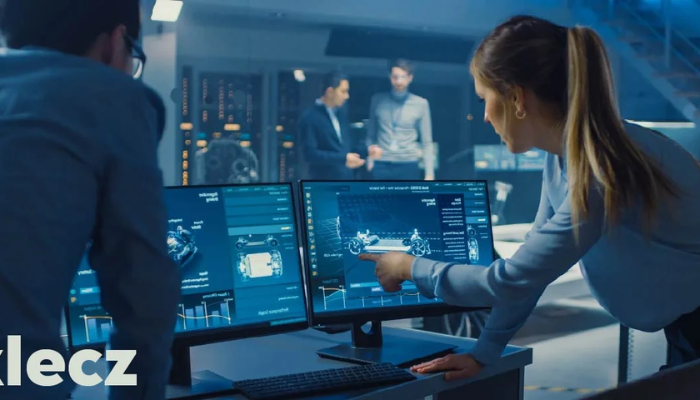
Photeeq lens flare is a powerful visual tool that can elevate your images from ordinary to extraordinary. Whether you’re a professional photographer or an enthusiastic hobbyist, adding lens flare effects using Photeeq’s editing tools can bring warmth, emotion, and a touch of cinematic magic to your photos.
In this guide, we’ll dive into everything you need to know about Photeeq lens flare—from understanding the basics to mastering advanced techniques. If you’re looking to enhance your visual storytelling and add flair to your imagery, this article is your ultimate resource.
What Is Photeeq Lens Flare and Why Use It?
Photeeq lens flare refers to the visual effect created when bright light sources, like the sun, hit a camera lens, producing beautiful light streaks, circles, or glows. Photeeq, once a popular plugin for photo editing, became known for simplifying this artistic enhancement, allowing photographers to add flare effects without the technical hassle.
Unlike natural lens flare, which can be unpredictable and sometimes unwanted, Photeeq lens flare offers controlled artistry. It lets users simulate the effect in a stylized manner during post-processing, making it a favorite among creatives seeking consistent results. The software’s intuitive interface and rich flare templates make it accessible even for beginners.
From emphasizing emotion in portrait photography to adding drama in landscapes, lens flare is a subtle yet powerful storytelling tool. By learning how to apply it correctly using Photeeq or similar tools, you can achieve a distinct aesthetic that sets your work apart.
How to Create Realistic Lens Flare Effects Using Photeeq
To craft a convincing Photeeq lens flare, it’s important to understand light behavior and placement. The key is realism—lens flare should appear as a natural consequence of the light source within the photo. Photeeq’s editing panel allows users to choose flare direction, intensity, and position relative to the light source, offering ultimate control.
Start by importing your image into your editing software and launching the Photeeq plugin. Select from various pre-designed flares—such as starbursts, streaks, or colored halos. Adjust the flare size and opacity so it complements rather than overpowers the image. Use layers and masking to blend the effect seamlessly into the background.
Advanced users can create custom lens flares by combining Photeeq’s presets with manual adjustments. For instance, duplicating layers with different blending modes photeeq lens flare(like “Screen” or “Overlay”) and adjusting hue/saturation can produce vibrant yet natural results. The goal is to enhance lighting without distracting from the subject.
Creative Applications of Photeeq Lens Flare in Photography
The artistic potential of Photeeq lens flare is vast. Portrait photographers use it to add warmth or dreaminess to backlit images. By positioning the flare near a subject’s hairline or edge, you create a halo effect that draws the viewer’s focus. This works exceptionally well in golden hour photography, where the warm tones of sunlight are already present.
In landscape photography, lens flare can simulate the brilliance of a sunrise or the intensity of high noon. A strategically placed flare over water or foliage can mimic natural sunlight interactions, adding depth and visual intrigue. With Photeeq, these effects are easy to tailor to different scenery types.
For product photography or advertising, adding a subtle lens flare can infuse images with modernity and polish. Many brands use this trick to make products feel aspirational and emotionally appealing. Whether you’re aiming for realism or stylization, Photeeq lens flare offers the flexibility to shape your visual narrative.
Common Mistakes to Avoid When Using Lens Flare Effects
While Photeeq lens flare can transform an image, overuse or poor placement can result in distraction or visual clutter. One of the most common mistakes is applying flares to photos with no visible light source. Always ensure there’s a logical reason for the flare’s appearance—it should align with a light source like the sun, lamp, or car headlights.
Another issue arises from excessive intensity. If the flare dominates the frame or obscures key subjects, it defeats its purpose. Always start with low opacity and build up gradually. Photeeq’s adjustment sliders make it easy to test variations before committing to the final version.
Color harmony is another consideration. Using flares with colors that clash with the overall scene can feel artificial. Stick to warm tones for sunset images and cooler tones for indoor lighting scenarios. Subtlety is key—when in doubt, less is more.
Alternatives and Modern Tools Inspired by Photeeq
Though Photeeq is no longer actively supported, its legacy lives on in modern photo editing tools.photeeq lens flare Many apps and plugins, like Luminar, Photoshop, and Lightroom, now include customizable lens flare filters inspired by Photeeq’s intuitive design.
Photoshop, for example, allows users to add flares using the “Render > Lens Flare” tool. Combine this with blending techniques and layer masks, and you can replicate many of Photeeq’s original effects. Meanwhile, Luminar’s AI-driven approach offers flare enhancements that adapt to the natural lighting of a photo, streamlining the process for beginners.
Mobile apps like Snapseed and Lens Distortions also provide on-the-go lens flare editing, perfect for Instagram-ready content.photeeq lens flare These tools carry the creative spirit of Photeeq forward, enabling photographers across platforms to achieve stunning light effects with ease.
Conclusion
The Photeeq lens flare effect remains a beloved technique in the photographer’s toolkit. Even as the original plugin fades into history, the methods and artistic vision it inspired continue to influence digital photo editing. Whether you’re adding warmth to a portrait, dramatizing a landscape, or crafting an ad-ready product shot, lens flare can infuse your imagery with emotion and brilliance.
By understanding when and how to use lens flare—and by avoiding common pitfalls—you can master this effect and elevate your visual storytelling. Whether you’re still using Photeeq or exploring modern alternatives, the magic of light is just a click away.
FAQs About Photeeq Lens Flare
1. What is Photeeq lens flare?
Photeeq lens flare is a visual light effect that simulates bright light streaks or halos, added during post-processing using the Photeeq plugin or similar tools.
2. Is Photeeq still available for download?
Photeeq has been discontinued, but older versions might still be accessible via third-party sites. However, caution is advised when downloading unsupported software.
3. What are good alternatives to Photeeq for lens flare?
Photoshop, Luminar, and Snapseed offer similar lens flare effects with advanced customization options.
4. Can I create lens flare in Lightroom?
While Lightroom doesn’t have built-in flare tools, you can add lens flare using presets or by importing flare overlays.
5. How do I make lens flare look realistic?
Ensure the flare aligns with a visible light source,photeeq lens flare use appropriate opacity, and blend colors with the scene for realism.
6. Is lens flare suitable for all types of photography?
Lens flare works best in portraits, landscapes, and conceptual photography. It may not suit documentary or technical imagery.
7. Does lens flare affect image quality?
If overused, it can reduce clarity or distract from the subject. Used wisely, it enhances depth and mood.
8. Are there mobile apps with Photeeq-style lens flare effects?
Yes, apps like Lens Distortions and Snapseed offer mobile-friendly lens flare tools inspired by Photeeq.
9. Can I customize Photeeq lens flare settings?
Yes, Photeeq allowed users to adjust flare size, position, brightness, and blending for tailored results.
10. Do professionals still use lens flare?
Absolutely! Professionals often use lens flare artistically to evoke emotion,photeeq lens flare especially in cinematic photography and commercial visuals.





